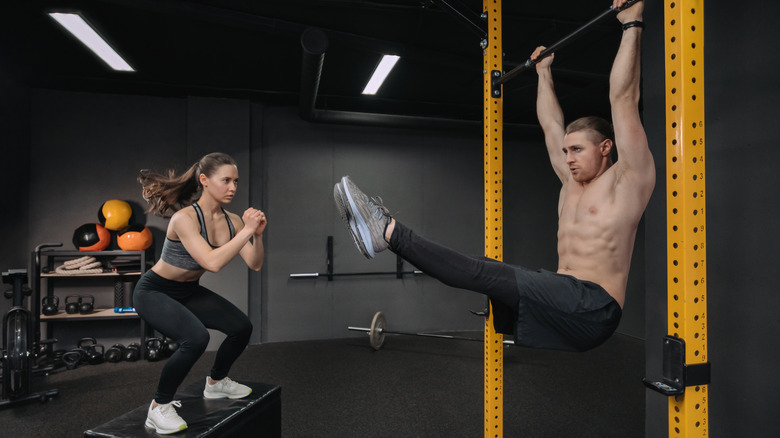How To Maximize The Benefits Of The Afterburn Effect
After a good high-intensity interval (HIIT) workout, your fitness tracker might say you burned 250 calories in 30 minutes — but the more effort you put in, the higher the afterburn, according to Les Mills. That means you'll continue to burn more calories after a HIIT workout than after a steady-state run or bike ride (via American Council on Exercise). This is because high-intensity exercise depletes your body of oxygen, and after your workout, your body needs more oxygen to restore and replenish the body.
It's called excess post-exercise oxygen (EPOC). During high-intensity workouts, you'll feel your muscles burn. When your body enters anaerobic mode, lactic acid is created from the glycogen in the muscles (via Les Mills). After your workout, your body needs energy to help shuttle this lactic acid out of the muscles and convert it back to glucose. You also might notice your breathing and heart rate are still elevated, according to the National Academy of Sports Medicine. Your body needs to make more neurotransmitters, like adrenaline, and more hormones, such as cortisol, thyroid, and insulin. This is all part of the afterburn, or EPOC.
Workouts that generate EPOC
According to American Council on Exercise, HIIT is the most effective type of exercise to generate afterburn. That's because you're working at an anaerobic intensity for short intervals. You can also retool your resistance training routine to produce more of an afterburn. Rather than lift heavy weight with a long rest, consider cutting down the rest interval and swapping between upper body and lower body compound movements to create a circuit.
If cardio is your thing, you can tweak the intensity of your favorite workout by adding short intervals, according to the National Academy of Sports Medicine. Try cycling, running, or jumping rope as hard as you can for 30 seconds, and then follow it up with one to two minutes of recovery. Repeat the intervals for 10 to 20 minutes for a good afterburn workout. You can also try a Tabata, where you work hard for 20 seconds and recover for eight or 10 intervals. You'll also need to aid your recovery through proper nutrition, adequate hydration, and quality sleep (via Les Mills).


